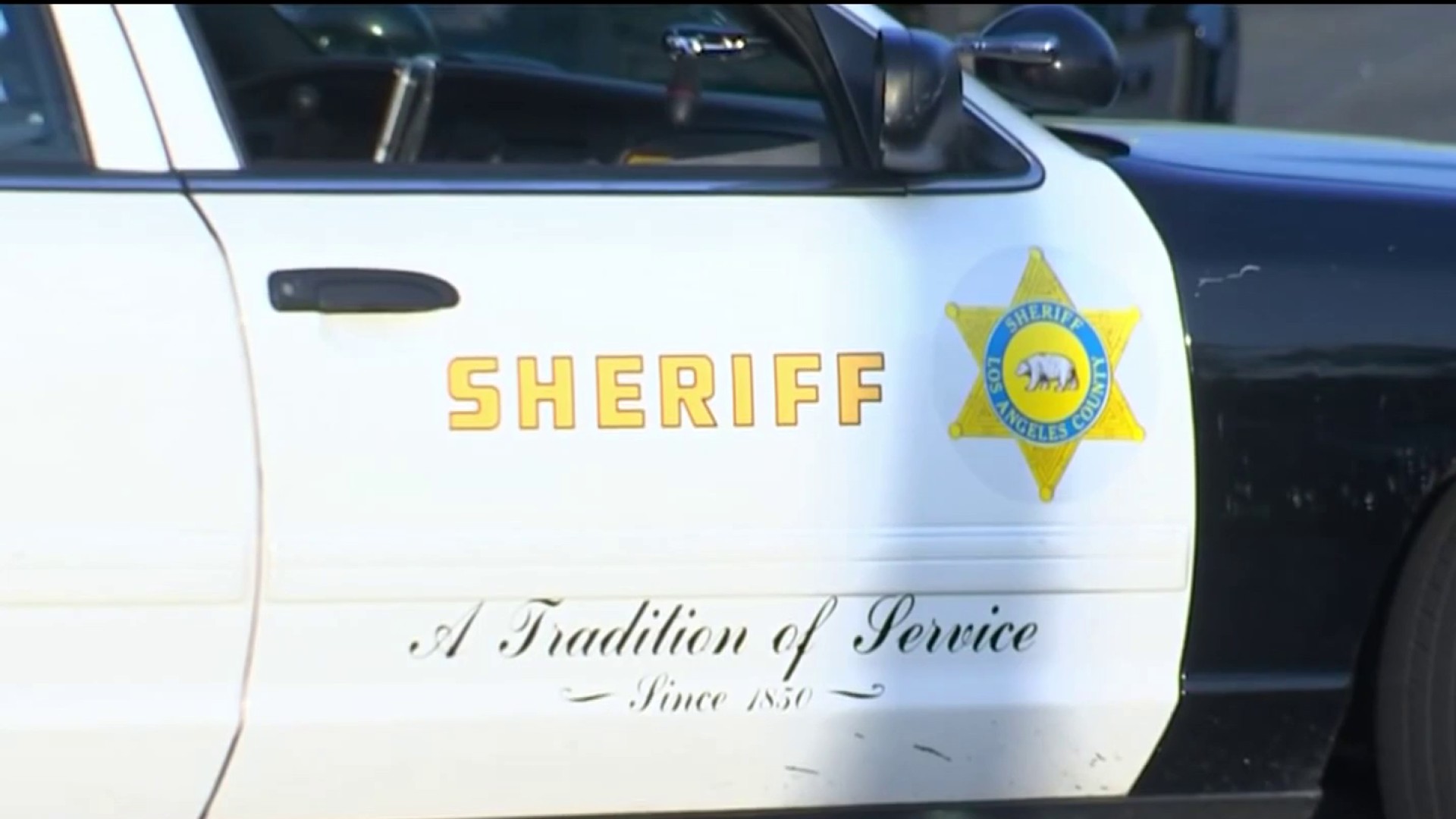As the massive natural gas leak in Aliso Canyon continues to pump methane into the air above Los Angeles, environmental activists are warning about a much bigger and more widespread crisis that is not drawing nearly as much attention: leaks throughout the nation's oil and gas supply chain.
A series of studies spearheaded by the Environmental Defense Fund beginning in 2012 found problems across the country at every point of the natural gas supply chain, from thousands of wellheads to miles of utility lines underneath city streets. Emissions at the Barnett Shale in Texas, one of the country's major oil and gas producing regions, were almost twice the estimates from the U.S. Environmental Protection Agency, researchers found.
Together the leaks add up to more than 7.3 million metric tons of methane emissions a year, dwarfing what is happening at Aliso Canyon — and producing the same effect on the climate over 20 years as 160 coal-fired power plants, the Environmental Defense Fund says. Earlier research of methane in the atmosphere indicated emissions were 50 percent greater than estimated by the EPA.
"Aliso Canyon on the one hand is unique because it's so big and because it is happening at a gas storage facility but it is at the same time very symptomatic of a problem that exists across the oil and gas industry," said Mark Brownstein, a vice president in the organization's climate and energy program.

With the United States now the largest producer of natural gas in the world, the Obama administration has been promoting it as a cleaner energy alternative. Even as environmental officials urge the country to lessen its dependence on natural gas, it remains a significant part of the U.S. energy mix.
And methane, the primary component of natural gas, is a potent greenhouse gas. In the United States, it amounted to 10 percent of greenhouse emissions in 2013, the second most prevalent gas connected to human activities after carbon dioxide, according to the EPA. Pound for pound, its effect on climate change is 25 times greater than carbon dioxide over a 100-year period.
Complaints of headaches and nosebleeds
The leak above the Los Angeles neighborhood of Porter Ranch, which has sickened some residents, is enormous — one of the largest ever recorded, according to Timothy O'Connor, the Environmental Defense Fund's oil and gas director in California. It has released more than 87,000 metric tons of methane into the atmosphere since the end of October, the equivalent of more than $13 million worth of natural gas wasted or 827 million gallons of gasoline burned, according to the organization.
The escaping methane is a blow to California's position as an environmental leader. Earlier this year, Gov. Jerry Brown announced an ambitious goal of curbing greenhouse gases faster than originally planned — but now officials estimate Aliso Canyon to be responsible for 25 percent of the state's methane emissions. Brown was forced to declare a state of emergency at the beginning of the month while Los Angeles Mayor Eric Garcetti has compared the leak to the Deepwater Horizon oil spill in 2010 in the Gulf of Mexico.
Aliso Canyon is used as a storage field by the Southern California Gas Co., whose crews discovered the leak at one of the wells on Oct. 23. The gas company says it could take until the end of February to cap it. A plan to capture and burn off the leaking gas was abandoned on Jan. 18 because regulators were afraid of a catastrophic explosion of the well. On Jan. 23, state regulators ordered the gas company to close the leaking well permanently.
The leak has driven thousands of people from their homes in Porter Ranch, many with complaints of headaches, nosebleeds and nausea, possibly from odorants that have been added. Natural gas has no odor so a smell of "rotten eggs" is added to help detect leaks. A group of residents have filed a class-action lawsuit and are demanding that the storage field be closed permanently.
"I think it's poisoning our family," one resident, Christine Katz, told NBC Los Angeles.
She and her husband, Brian, sued Southern California Gas Co. and its parent company, Sempra Energy, in December after one of their children was hospitalized for trouble breathing.
Local
Get Los Angeles's latest local news on crime, entertainment, weather, schools, COVID, cost of living and more. Here's your go-to source for today's LA news.
"She's never had a breathing problem," Christine Katz said of her 2-year-old daughter, Ava. "She's never had asthma."
The Gas Company has said it does not comment on pending litigation.
"Stuff just goes wrong"
There are 400 other natural gas storage facilities across the country, with their potential for leaks. But it is the generally much smaller leaks occurring throughout the system that are more of a problem, said Adam Brandt, an assistant professor at Stanford University's School of Earth, Energy & Environmental Science.
"Getting the overall leakage percentage down of the whole system, not just of any particular leak, is pretty important for future use of gas in the face of climate concerns," Brandt said.
Natural gas is a significant component of the U.S. energy supply — supplying a third of the country's electricity, heating about two-thirds of the homes and fueling stoves — plus it is used for plastics and fertilizer.
An earlier study, conducted by researchers from Stanford University and elsewhere and of which Brandt was the lead author, found that methane leaks had negated the climate-change benefits of using natural gas over diesel fuel for transportation — though it also found that generating electricity by burning gas instead of coal would still lower greenhouse effects over 100 years. That's because burning coal not only releases an enormous amount of carbon dioxide but mining it also releases methane.
There are close to 1 million oil and gas wells across the United States and millions of miles of pipes. The methane leaks are a result both of aging infrastructure and the complexity of the system, Brandt said. Often wells are scattered in remote areas, added to the challenge of locating leaks and repairing them.
"You’ve got a complex system under pressure with a lot of devices and valves and safety systems associated with it and stuff just goes wrong," he said.
[NATL] Top News Photos: Pope Visits Japan, and More
New federal regulations
David Allen, a professor in chemical engineering and director of the Center for Energy and Environmental Resources at the University of Texas at Austin, said that one way to tackle the problem would be to find so-called super-emitters or equipment, wells or sites that emit large amounts of methane and make repairs or replacements there.
"Often a small subset of wells, or sites, or specific pieces of equipment, dominate the emissions from that type of emissions source," said Allen, the principal investigator for one of the Environmental Defense Fund's studies, in an email.
For example, about 20 percent of pneumatic controllers — devices found all along the oil and gas chains to control the opening and closing of values — account for 95 percent of methane emissions from pneumatic controllers, he said.
The oil and gas industry says the regulations are unnecessary and expensive. The cost to industry, would be up to $420 million a year by 2025 but that would be countered by savings of up $550 million a year, according to EPA estimates.
Environmentalists back the regulations but say they do not go far enough because they apply primarily to new wells not existing ones.
Opposition from the oil, gas industry
"The fact is that America is already leading the world in reducing greenhouse gas emissions," the American Petroleum Institute said in a statement. "Even as oil and natural gas production has risen dramatically, methane emissions have fallen, thanks to industry leadership and investment in new technologies."
The institute's president, Jack Gerard, has said that even as oil and natural gas production has surged, methane emissions from hydraulically fractured natural gas wells have fallen nearly 79 percent since 2005, and carbon dioxide emissions were down to 27-year lows. The decrease was a result of significant investments in new technologies and leadership from the industry, he said.
The president of the Independent Petroleum Association of America, Barry Russell, said in a statement that administration was proposing a costly and complicated regulatory program for few environmental benefits. The cuts would inflict more pain on the men and women working in the oil and gas industry at a time when it was already buffeted by falling prices.
[NATL] Extreme Weather Photos: Record Heat Threatens Europe
Texas Republican Rep. Lamar Smith, the chairman of the House of Representatives Science, Space and Technology Committee, called the proposed rules another example of the "Obama administration's war on American energy jobs."
"The EPA's own data show that methane emissions in the United States decreased by almost 15 percent between 1990 and 2013, yet EPA is forging ahead with this extraneous and unnecessary regulation," Smith said in a statement over the summer. "Instead of conspiring with extreme environmental interests, EPA should stop punishing cooperative industry stakeholders and start partnering with them in their current efforts to capture methane in a responsible manner.”
The Environmental Defense Fund disputes that representation of emissions data and says that the 7.3 million metric tons estimated by the EPA show a 3 percent increase over 2012.
"There needs to be a requirement frankly that companies do systematic and routine surveys of their operations so that in the event that there is a problem it can be found and fixed," Brownstein said.
A handful of states, Colorado, Pennsylvania, Ohio and Wyoming, have implemented their own regulations for finding and fixing leaks — Pennsylvania announced on Jan. 19 that it would include existing natural gas operations — but others have not.
"I think that's ultimately why you need a federal standard, because some states are going to step up and other states won't," Brownstein said.



